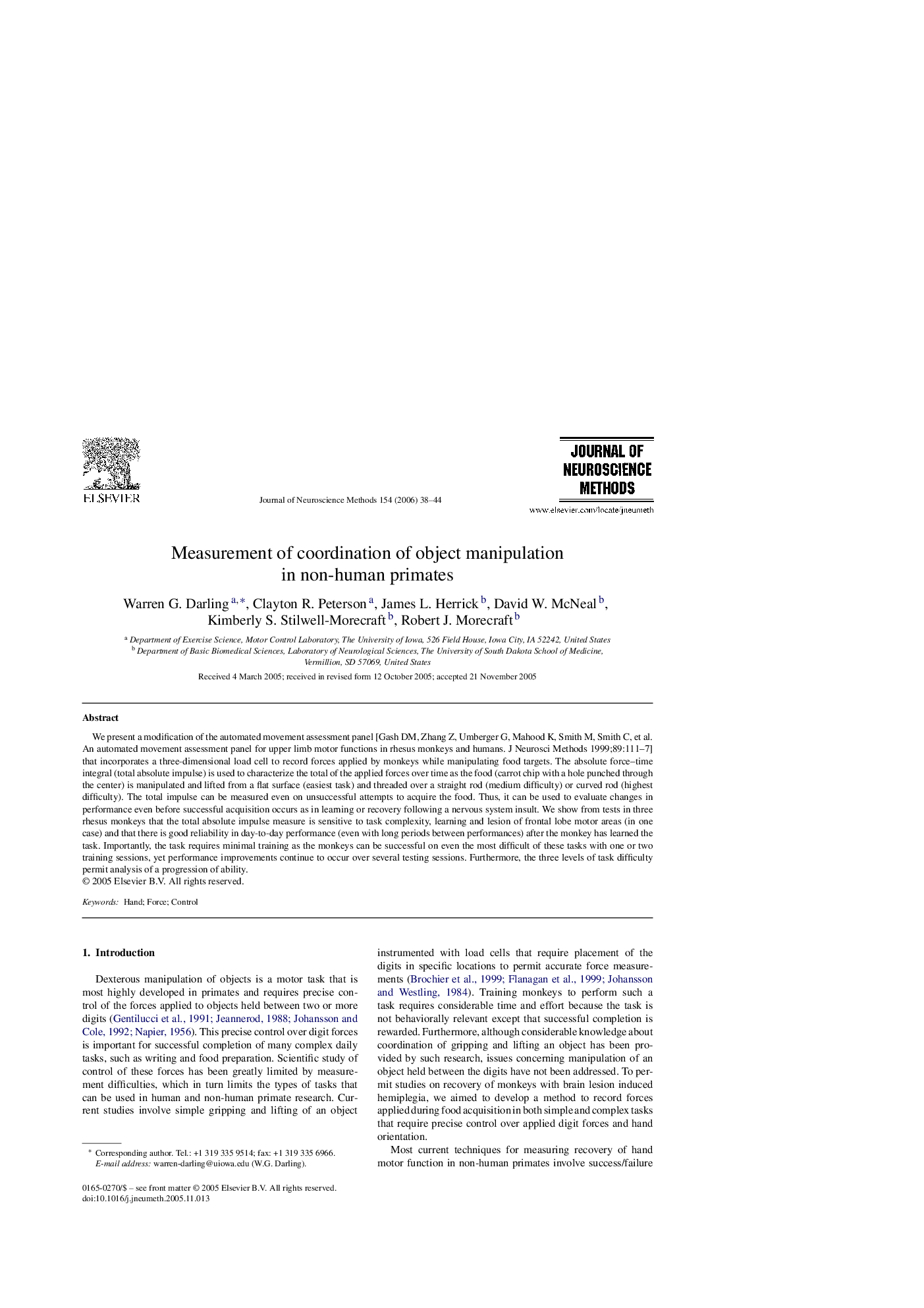| کد مقاله | کد نشریه | سال انتشار | مقاله انگلیسی | نسخه تمام متن |
|---|---|---|---|---|
| 4336851 | 1614659 | 2006 | 7 صفحه PDF | دانلود رایگان |

We present a modification of the automated movement assessment panel [Gash DM, Zhang Z, Umberger G, Mahood K, Smith M, Smith C, et al. An automated movement assessment panel for upper limb motor functions in rhesus monkeys and humans. J Neurosci Methods 1999;89:111–7] that incorporates a three-dimensional load cell to record forces applied by monkeys while manipulating food targets. The absolute force–time integral (total absolute impulse) is used to characterize the total of the applied forces over time as the food (carrot chip with a hole punched through the center) is manipulated and lifted from a flat surface (easiest task) and threaded over a straight rod (medium difficulty) or curved rod (highest difficulty). The total impulse can be measured even on unsuccessful attempts to acquire the food. Thus, it can be used to evaluate changes in performance even before successful acquisition occurs as in learning or recovery following a nervous system insult. We show from tests in three rhesus monkeys that the total absolute impulse measure is sensitive to task complexity, learning and lesion of frontal lobe motor areas (in one case) and that there is good reliability in day-to-day performance (even with long periods between performances) after the monkey has learned the task. Importantly, the task requires minimal training as the monkeys can be successful on even the most difficult of these tasks with one or two training sessions, yet performance improvements continue to occur over several testing sessions. Furthermore, the three levels of task difficulty permit analysis of a progression of ability.
Journal: Journal of Neuroscience Methods - Volume 154, Issues 1–2, 30 June 2006, Pages 38–44